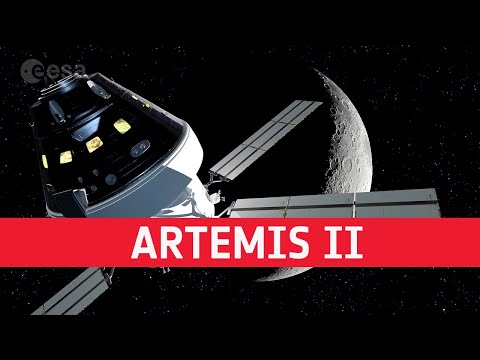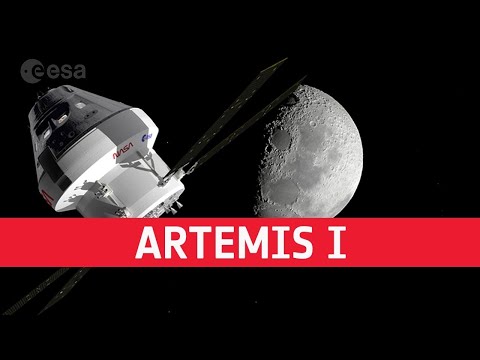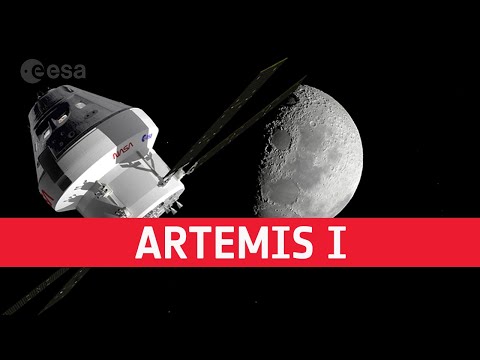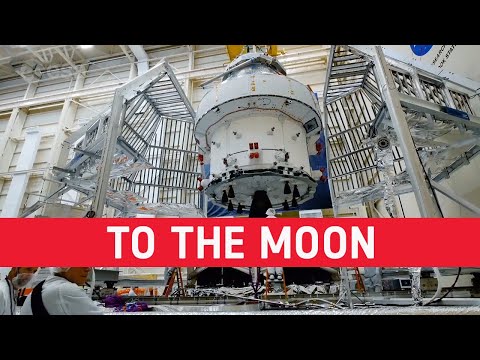Artemis I | Liftoff to splashdown
The uncrewed Artemis I test flight saw Orion travel around the Moon and farther than any spacecraft designed to carry humans and return them to Earth. Artemis is the international lunar exploration programme that is taking humankind to the Moon. This first mission provided a first test of both NASA’s Space Launch System (SLS) and the Orion moonship that was propelled by the European Service Module’s 33 engines beyond the Moon and into deep space. Future European Service Modules will provide electricity, propulsion and cabin thermal control for astronauts on lunar missions as well as breathable atmosphere and drinking water.
Launched by the first SLS on 16 November at 06:47 GMT/07:47 CET (01:47 local time) from NASA’s Kennedy Space Center, Florida, Orion flew a 25-day mission that saw it fly by the Moon twice. Passing as close as 130 km from the lunar surface, the spacecraft used the Moon’s gravity to sling it into lunar orbit and then later return it on course to Earth.
The first lunar flyby occurred on 21 November at 12:44 GMT/13:44 CET, with the ESM firing its main engine to send Orion behind and around the Moon. Ten days after liftoff, Orion entered the Moon’s orbit at 12:44 GMT/13:44 CET on 25 November when the ESM fired its main engine.
NASA’s Orion spacecraft splashed down in the Pacific Ocean at 17:40 GMT/18:40 CET on 11 December, after travelling around the Moon and farther than any spacecraft designed to carry humans and return them to Earth. Just 40 minutes before splashdown, and having delivered Orion safely back to Earth, ESA’s European Service Module (ESM) with its Crew Module Adapter detached from the capsule. As planned, the ESM burned up harmlessly in the atmosphere as the Orion Crew Module guided itself through re-entry, orienting the capsule with its own thrusters, releasing its three parachutes and gracefully splashing down off the coast of San Diego, USA.
★ Subscribe: http://bit.ly/ESAsubscribe and click twice on the bell button to receive our notifications.
Check out our full video catalog: http://bit.ly/SpaceInVideos
Follow us on Twitter: http://bit.ly/ESAonTwitter
On Facebook: http://bit.ly/ESAonFacebook
On Instagram: http://bit.ly/ESAonInstagram
On LinkedIn: https://bit.ly/ESAonLinkedIn
On Pinterest: https://bit.ly/ESAonPinterest
On Flickr: http://bit.ly/ESAonFlickr
We are Europe’s gateway to space. Our mission is to shape the development of Europe’s space capability and ensure that investment in space continues to deliver benefits to the citizens of Europe and the world. Check out https://www.esa.int/ to get up to speed on everything space related.
Copyright information about our videos is available here: https://www.esa.int/ESA_Multimedia/Terms_and_Conditions
#ESA
#NASA
#Artemis





Кубрик лучше снимал
Kubrick shot better
Could have "sworn on the Bible" and put the landing conspiracy to bed, but nope. You do you NASA .
Que incrível …bela partilha!!
It's Shaun the space-sheep!
just send 1 lunar robot to appollo landing site , prove all every thing about apollo will be there , then all conspiracy theory come to the end…really ???
Congratulations ESA! Some positive news! Amazing to think that I too might witness man going to the Moon, only this time in excellent video quality. Hopefully it's only a beginning of something more. Technology is amazing, if used for good and human development. Sadly, not much of that going on these days…
Greetings from Croatia
Thanks for the privilege.
Success all through
Thank you
Was agreat feat,but i still think this money would have been better spent on defence of America and the free world.After all what good is space travel if you can't protect yourself from rogue nations?
Congratulations on yet another era of ________..
Могли бы и по лучше нарисовать🤡✌️👽
🤣🤣🤣🤣🤣🤣🤣🤣
Was that Elon in the driver's seat ?
James Bond in "Diamonds Are Forever" showed how it was all done. I don't believe Sean Connery would have participated in a project that wasn't based on fact.